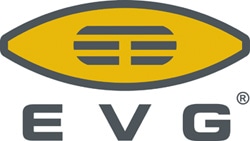The EVG® 720 is an automated UV nanoimprint lithography (UV-NIL) system that is capable of printing nanostructures down to 40nm over a large area with high throughput and low cost of ownership. The system is suitable for large-scale production of bioMEMS devices, such as optics, photonics, microfluidics, light emitting diodes (LEDs), as well as sophisticated data storage devices.

Image Credit: Shutterstock/Yurchanka Siarhei
Features of EVG® 720
.jpg)
Figure 1. EVG® 720 Automated UV-NIL system.
Built on EVG's materials expertise, the EVG® 720 (Figure 1) leverages an advanced UV-NIL technology to facilitate volume manufacturing of micro- and nanometer-scale structures. The system delivers unmatched throughput and allows integrated stamp manufacturing, which prevents the necessity for stand-alone stamp replication systems and consequently leads to reduced cost of ownership.
The EVG® 720 allows inert gas printing and has improved adhesion and chemical resistance. It has lower photo initiator levels and allows faster and more consistent curing. Moreover, particle contamination is reduced by means of integrated electrostatic discharge, and optical clearance removes any visible vacuum lines in the active imprint area.
Other features include integrated separation of stamp and substrate, top and/or bottom side alignment, open material platform for commercially available imprint materials, and large area imprint of up to 150mm2. The EVG® 720 offers increased production speeds, reduced energy consumption, and maintenance-friendly operation without any need for additional tubing and plumbing.
Applications of UV Nanoimprint
UV-NIL is an innovative, next-generation lithography technique with nearly infinite geometry and structure size capabilities. The EVG® 720 was subjected to endurance and marathon test, which demonstrated its suitability for a variety of applications such as thin film solar cell, light extraction, and biological sensing.
Thin Film Solar Cells
In solar cells, power conversion efficiency mainly depends on the capability of a semiconductor material to absorb electromagnetic radiation. Any radiation that is not absorbed into the semiconductor and gets reflected or absorbed into other materials cannot be changed into electrical power. Therefore, one way to optimize silicon solar cells or substrates (Figure 2) is to enhance their optical properties. To this end, micro- and nanostructures for photon management show greater relevance in innovative high-efficiency solar cell concepts, and hence structuring methods with up-scaling potential like UV-NIL contribute significantly in their realization.
.jpg)
Figure 2. A fully populated 6” imprinted silicon substrate.
UV-NIL allows industrial manufacturing of structures for diffractive side structures, front-side texturing, and periodic and aperiodic imprinted structures such as increased P-N junction length arrays and substrates for transparent conductive oxide (TCO) deposition.
Light Extraction
.jpg)
Figure 3. SEM Image of 500 nm imprinted patterned sapphire structures.
Sapphire substrates are generally utilized for growing GaN films; however, the large lattice varies between the grown GaN layers and common sapphire substrates and promotes threading dislocations at the interface. These threading dislocations in turn bring down the quality and lifespan of the LED chip.
Nano-patterned sapphire or patterned sapphire (Figure 3) structured by UV-NIL technique overcomes this issue by changing the crystal growth orientation of the epitaxial film grown on pre-structured sapphire substrates. Moreover, these surface structures are capable of showing effects that are analogous to surface roughening to improve the efficiency of light extraction.
Biological Sensing
Since most biological events start at the nanometer level, nano-scale production techniques can help in understanding and leveraging basic biological processes to enhance analytical procedures for biomedicine. For instance, nano-scale techniques can be used to enhance the performance of contemporary medical devices or to improve assays’ speed and sensitivity.
Traditional lithography techniques with low throughput are not sufficient to produce nano-scale biological and medical devices. This is because a large number of similar devices with large patterned areas have to be manufactured at reduced cost to create sufficient statistical data, both at the experimental stage and clinical trials, to reduce critical device errors that promote errors during the diagnosis and treatment of diseases.
Conclusion
UV-NIL is one of the most powerful and promising lithography technologies for nanopatterning. With its flexibility, scalability, and easy accessibility for patterning micro- and nanoscale structures, it is suitable for a wide range of applications such as biomedical, Light Extraction, and thin film solar cell applications.
About EV Group
EV Group (EVG) is a recognized technology and market leader for wafer processing equipment. The company targets advanced packaging, compound semiconductor/LED and silicon-based power devices, MEMS, nanotechnology and silicon-on-insulator (SOI) markets with its industry-leading wafer-bonding, lithography/nano-imprint lithography (NIL), metrology, photoresist coating, cleaning and inspection equipment.
EVG has set worldwide industry standards for aligned wafer bonding as well as resist processing for the MEMS, nanotechnology and semiconductor industries. In fact, EVG holds the dominant share of the market for wafer bonding equipment and is a market and technology leader in lithography for advanced packaging and nanotechnology. Through close collaboration with its global customers, the company implements its flexible manufacturing model to develop reliable, high-quality, low-cost-of-ownership systems that are easily integrated into customers’ fab lines.
A long history of innovation, superior process capabilities and advanced, cost-effective production equipment, as well as quality and support make EVG the partner of choice, both in R&D and high volume production environments.
EVG's technological expertise and cooperative relationships with an extensive list of global partners enables customers to develop and successfully commercialize their innovations. EVG is working closely with universities, as well as industry related and independent R&D institutes, and plays a major role in numerous industry consortia. Along these lines, the company founded NILCom, a consortium of imprint lithography supply chain companies and research organizations working together to assist clients in advancing their ideas into a manufacturing environment.
Founded in 1980, EVG is headquartered in St. Florian, Austria, and operates via a global customer support network, with subsidiaries in Tempe, Ariz.; Albany, N.Y.; Yokohama and Fukuoka, Japan; Seoul, Korea and Chung-Li, Taiwan. The company’s unique Triple i-approach (invent - innovate - implement) is supported by a vertical integration, allowing EVG to respond quickly to new technology developments, apply the technology to manufacturing challenges and expedite device manufacturing in high volume.
With state-of-the-art application labs and clean-room facilities based at its headquarters in Austria, as well as in the U.S. and Japan, EV Group (EVG) is focused on delivering superior process expertise to its growing global customer base. Last but not least, these advanced process development and application labs are designed to accommodate independent research work to explore and develop baseline processes and conduct small volume pilot line runs to simulate an actual production line process.

This information has been sourced, reviewed and adapted from materials provided by EV Group.
For more information on this source, please visit EV Group.